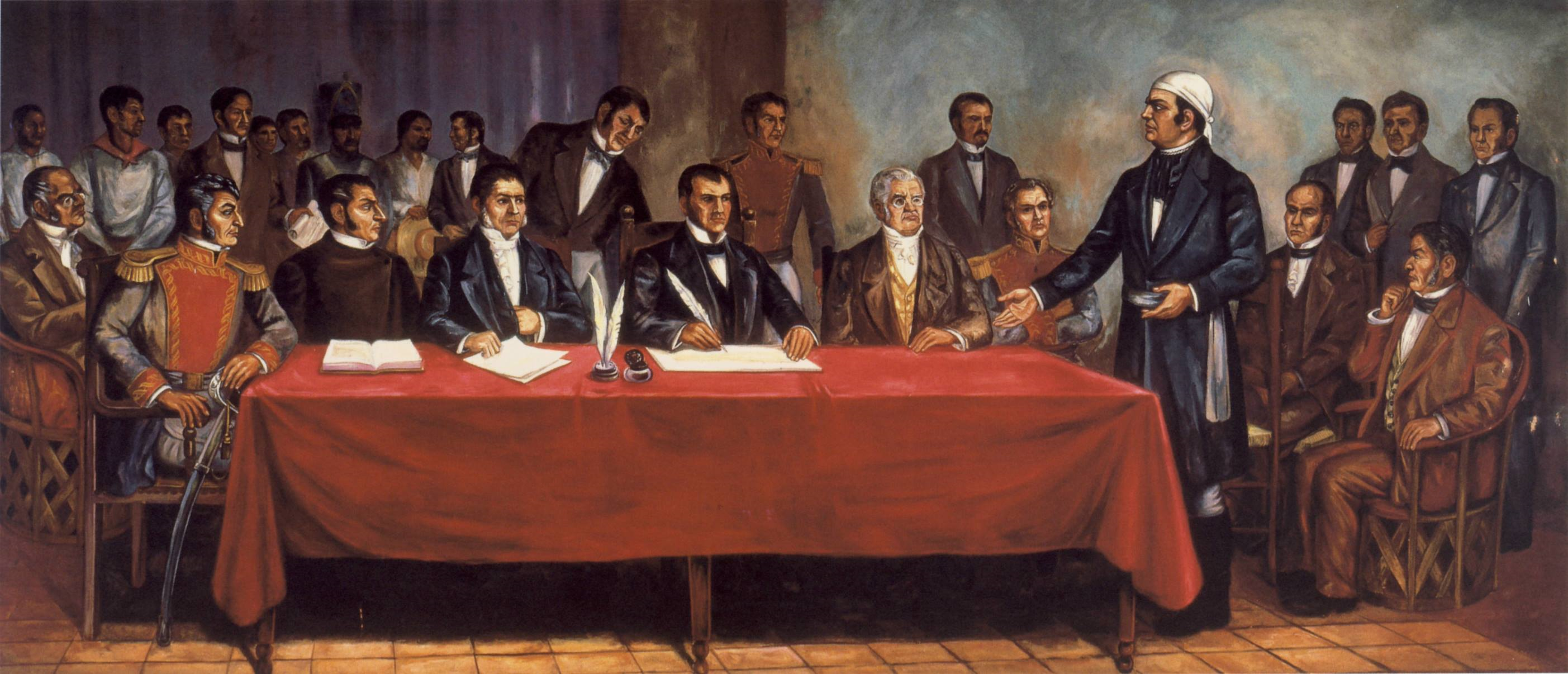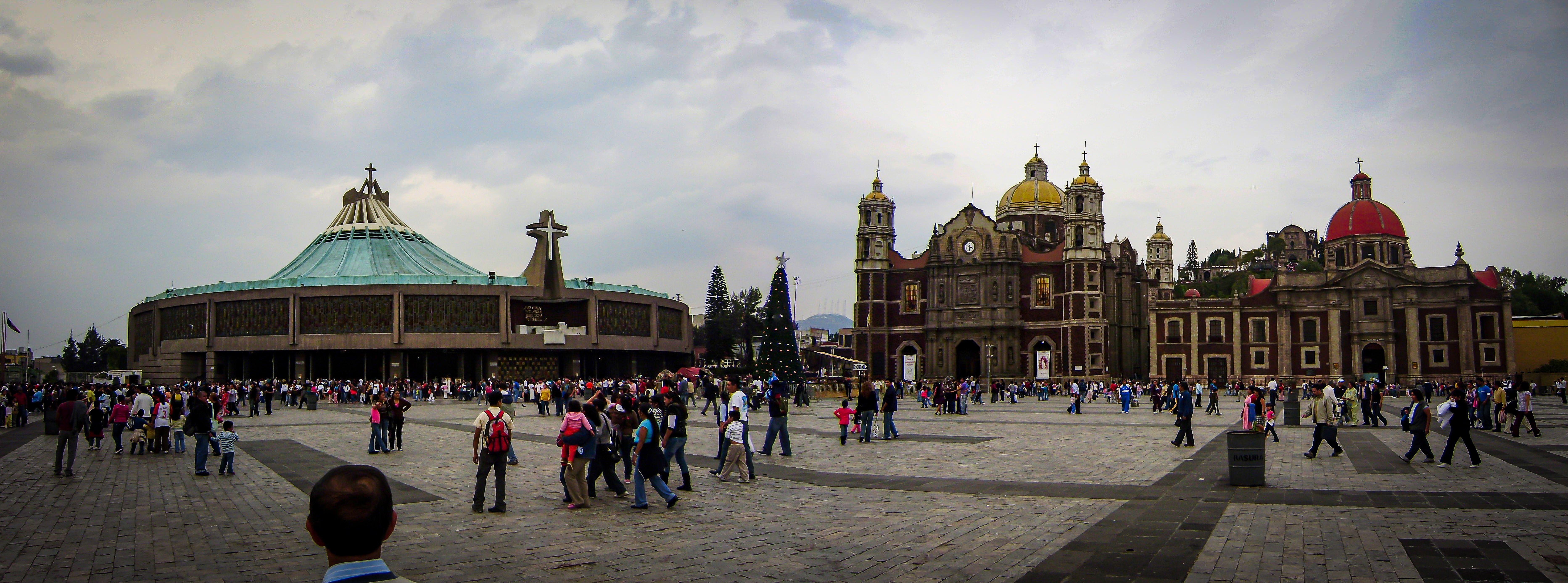|
Chilpancingo Cathedral
The St. Mary of the Assumption Cathedral (also Chilpancingo Cathedral; ) is the main Catholic church of the city of Chilpancingo in Mexico. It is consecrated to the Virgin Mary in its invocation of St. Mary of the Assumption and has been the episcopal seat of the Diocese of Chilpancingo-Chilapa for some years, since it was previously located in the city of Chilapa de Álvarez. It is located in the downtown area within the architectural and historical complex that occupies the First Congress of Anahuac Civic Square. Its construction took place at the end of the 18th century and beginning of the 19th century. Built in Neoclassical style, it consists of a single nave. The main portal, with two sections and a frontispiece, has wooden panelling. The first section features bossage, without columns, and an arch; the second section features a choir window, framed by two square Tuscan order columns; on the sides are two large medallions. The arches of the second section support a triangula ... [...More Info...] [...Related Items...] OR: [Wikipedia] [Google] [Baidu] |
Chilpancingo
Chilpancingo de los Bravo (commonly shortened to Chilpancingo; ; Nahuatl: Chilpantzinco ()) is the capital and second-largest city of the Mexican state of Guerrero. In 2010 it had a population of 187,251 people. The municipality has an area of in the south-central part of the state, situated in the Sierra Madre del Sur mountains, on the bank of the Huacapa River. The city is on Federal Highway 95, which connects Acapulco to Mexico City. It is served by Chilpancingo National Airport, which is one of the five airports in the state. History In pre-Columbian times, the area was occupied by the Olmecs, who built an extensive tunnel network through the mountains, and left the cave paintings in the caverns of Juxtlahuaca. The city of Chilpancingo was founded on 1 November 1591 by the Spanish conquistadores, its name meaning "Place of Wasps" in Nahuatl. During the War of Independence, Chilpancingo was crucial to the insurgent cause as its population participated actively and dec ... [...More Info...] [...Related Items...] OR: [Wikipedia] [Google] [Baidu] |
Pediment
Pediments are a form of gable in classical architecture, usually of a triangular shape. Pediments are placed above the horizontal structure of the cornice (an elaborated lintel), or entablature if supported by columns.Summerson, 130 In ancient architecture, a wide and low triangular pediment (the side angles 12.5° to 16°) typically formed the top element of the portico of a Greek temple, a style continued in Roman temples. But large pediments were rare on other types of building before Renaissance architecture. For symmetric designs, it provides a center point and is often used to add grandness to entrances. The cornice continues round the top of the pediment, as well as below it; the rising sides are often called the "raking cornice". The tympanum is the triangular area within the pediment, which is often decorated with a pedimental sculpture which may be freestanding or a relief sculpture. The tympanum may hold an inscription, or in modern times, a clock face. ... [...More Info...] [...Related Items...] OR: [Wikipedia] [Google] [Baidu] |
Buildings And Structures In Guerrero
A building or edifice is an enclosed Structure#Load-bearing, structure with a roof, walls and window, windows, usually standing permanently in one place, such as a house or factory. Buildings come in a variety of sizes, shapes, and functions, and have been adapted throughout history for numerous factors, from building materials available, to weather conditions, land prices, ground conditions, specific uses, monument, prestige, and aesthetic reasons. To better understand the concept, see ''Nonbuilding structure'' for contrast. Buildings serve several societal needs – occupancy, primarily as shelter from weather, security, living space, privacy, to store belongings, and to comfortably live and work. A building as a shelter represents a physical separation of the :Human habitats, human habitat (a place of comfort and safety) from the ''outside'' (a place that may be harsh and harmful at times). buildings have been objects or canvasses of much architecture, artistic expression. ... [...More Info...] [...Related Items...] OR: [Wikipedia] [Google] [Baidu] |
Roman Catholic Cathedrals In Mexico
Roman or Romans most often refers to: *Rome, the capital city of Italy *Ancient Rome, Roman civilization from 8th century BC to 5th century AD *Roman people, the people of Roman civilization *Epistle to the Romans, shortened to Romans, a letter written by Paul, found in the New Testament of the Christian Bible * Ar-Rum (), the 30th sura of the Quran. Roman or Romans may also refer to: Arts and entertainment Music * Romans (band), a Japanese pop group * ''Roman'' (album), by Sound Horizon, 2006 * ''Roman'' (EP), by Teen Top, 2011 *" Roman (My Dear Boy)", a 2004 single by Morning Musume Film and television * Film Roman, an American animation studio * ''Roman'' (film), a 2006 American suspense-horror film * ''Romans'' (2013 film), an Indian Malayalam comedy film * ''Romans'' (2017 film), a British drama film * ''The Romans'' (''Doctor Who''), a serial in British TV series People * Roman (given name), a given name, including a list of people and fictional characters * Roman (surna ... [...More Info...] [...Related Items...] OR: [Wikipedia] [Google] [Baidu] |
Roman Catholicism In Mexico
The Mexican Catholic Church, or Catholic Church in Mexico, is part of the worldwide Catholic Church, under the spiritual leadership of the Pope, his Curia in Rome, and the national Mexican Episcopal Conference. According to the Mexican census, Roman Catholicism is the dominant religion in Mexico, practiced by 77.7 percent of the population in 2020. A Statistica survey suggests this number could be a little lower, suggesting Catholics could make up 72 percent of the nation. The history of the Catholic Church in Mexico dates from the period of the Spanish conquest of the Aztec Empire (1519–1521) and it has continued as an institution in Mexico into the twenty-first century. In the late 20th century, Eastern Catholic jurisdictions were also established in Mexico. In many parts of the country, Catholic Christianity is heavily syncretized with folk customs; and Aztec, Mayan, and other pre-Columban religions. History The history of the Catholic Church in Mexico can be divi ... [...More Info...] [...Related Items...] OR: [Wikipedia] [Google] [Baidu] |
Sentimientos De La Nación
''Sentimientos de la Nación'' ("Feelings of the Nation"; occasionally rendered as "Sentiments of the Nation") was a document presented by José María Morelos y Pavón, leader of the insurgents in the Mexican War of Independence, to the National Constituent Congress in Chilpancingo (modern-day Guerrero) on 14 September 1813. The document set out, in 23 points, Morelos's vision of the future nation of Mexico. #America is free and independent of Spain and all other nations, governments, or monarchies. #The Catholic faith is the sole religion, and no others will be tolerated. #Ministers of religion to survive on tithes and first fruits, with the people owing only devotion and offerings. #Dogma as established by Church hierarchy: Pope, bishops, and priests. #Sovereignty emanates from the people and is placed in a Supreme National American Congress, made up of representatives from the provinces in equal numbers. #Division of powers into appropriate executive, legislative, and judic ... [...More Info...] [...Related Items...] OR: [Wikipedia] [Google] [Baidu] |
Congress Of Anahuac
A congress is a formal meeting of the Representative democracy, representatives of different countries, constituent states, organizations, trade unions, political party, political parties, or other groups. The term originated in Late Middle English to denote an wikt:encounter, encounter (meeting of adversaries) during battle, from the Latin ''wikt:congressus, congressus''. Political congresses International relations The following congresses were formal meetings of representatives of different nations: *The Congress of Aix-la-Chapelle (1668), which ended the War of Devolution *The Congress of Aix-la-Chapelle (1748), which ended the War of the Austrian Succession *The Congress of Aix-la-Chapelle (1818) *The Congress of Berlin (1878), which settled the Eastern Question after the Russo-Turkish War (1877–1878) *The Congress of Gniezno (1000) *The Congress of Laibach (1821) *The Congress of Panama, an 1826 meeting organized by Simón Bolívar *The Congress of Paris (1856), which en ... [...More Info...] [...Related Items...] OR: [Wikipedia] [Google] [Baidu] |




